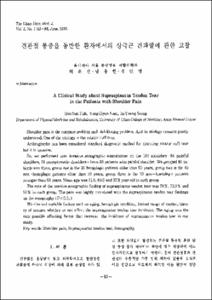B형간염 백신의 소량접종에 의한 면역효과
- Alternative Title
- Efficacy of Low Dose Hepatitis B Vaccination
- Abstract
- Hepatitis B virus infection is one of the most important health problems not only in morbidity but in mortality among Korean people. But high cost of hepatitis B vaccine could have interfered the introduction of the universal vaccination programme. To evaluate the efficacy of low dose hepatitis B vaccination we performed comparative study of immunogenicity of hepatitis B vaccination among three groups of low dose intradermal (LD-ID), low dose intramuscular (LD-IM) and usual dose intramuscular(control) immunization.
The numbers of vaccinees of LD-ID, LD-IM and control group are 64(mean age:36.8 years), 22(mean age:37.4 years) and 48(mean age:34.6 years) respectively. In LD-ID group, plasma-derived hepatitis B vaccine(Hepavax-B) 0.1ml was administered intradermally on volar side of forearm at 0, 1, 2 months. In LD-IM and control group, Hepavax-B 0.1ml and 1.0ml were adminstered intramuscularly on deltoid muscle at 0, 1, 2 months, respectively. HBsAg, anti-HBc were tested by radioimmunoassay at 1 month after third vaccination.
The seroconversion rate of anti-HBs in LD-IM group(50.0%) is significantly lower than those of LD-ID(89.1%) and control group(83.3%)(P<0.05). The geometric mean of anti-HBs titer in LD-IM group (34 RIA units; 95% CI:13-87) is significantly lower than those of LD-ID(578 RIA units, 95% CI:374-893) and control group(272 RIA units ; 95% CI : 138-533). The side reactions in LD-ID group are local skin reactions such as pain and pigmentation.
As a cost-effective preventive measure of hepatitis B virus infection in adults, the low dose intradermal method is comparable with usual dose intramuscular method in the aspects of anti-HBs serconversion rate and anti-HBs titer.
Hepatitis B virus infection is one of the most important health problems not only in morbidity but in mortality among Korean people. But high cost of hepatitis B vaccine could have interfered the introduction of the universal vaccination programme. To evaluate the efficacy of low dose hepatitis B vaccination we performed comparative study of immunogenicity of hepatitis B vaccination among three groups of low dose intradermal (LD-ID), low dose intramuscular (LD-IM) and usual dose intramuscular(control) immunization.
The numbers of vaccinees of LD-ID, LD-IM and control group are 64(mean age:36.8 years), 22(mean age:37.4 years) and 48(mean age:34.6 years) respectively. In LD-ID group, plasma-derived hepatitis B vaccine(Hepavax-B) 0.1ml was administered intradermally on volar side of forearm at 0, 1, 2 months. In LD-IM and control group, Hepavax-B 0.1ml and 1.0ml were adminstered intramuscularly on deltoid muscle at 0, 1, 2 months, respectively. HBsAg, anti-HBc were tested by radioimmunoassay at 1 month after third vaccination.
The seroconversion rate of anti-HBs in LD-IM group(50.0%) is significantly lower than those of LD-ID(89.1%) and control group(83.3%)(P<0.05). The geometric mean of anti-HBs titer in LD-IM group (34 RIA units; 95% CI:13-87) is significantly lower than those of LD-ID(578 RIA units, 95% CI:374-893) and control group(272 RIA units ; 95% CI : 138-533). The side reactions in LD-ID group are local skin reactions such as pain and pigmentation.
As a cost-effective preventive measure of hepatitis B virus infection in adults, the low dose intradermal method is comparable with usual dose intramuscular method in the aspects of anti-HBs serconversion rate and anti-HBs titer.
- Issued Date
- 1992
- Type
- Research Laboratory
- Alternative Author(s)
- Kim, Young Sik; Kim, Chul Joon
- Publisher
- 울산의대학술지
- Language
- kor
- Rights
- 울산대학교 저작물은 저작권에 의해 보호받습니다.
- Citation Volume
- 1
- Citation Number
- 1
- Citation Start Page
- 174
- Citation End Page
- 178
- Appears in Collections:
- Research Laboratory > The ULSAN university medical journal
- 파일 목록
-
-
Download
 000002023834.pdf
기타 데이터 / 252.42 kB / Adobe PDF
000002023834.pdf
기타 데이터 / 252.42 kB / Adobe PDF
-
Items in Repository are protected by copyright, with all rights reserved, unless otherwise indicated.